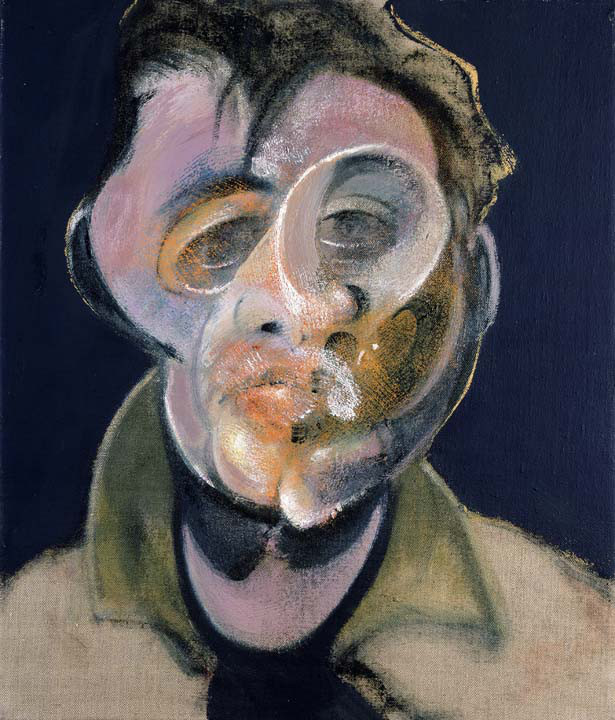
Much of modern art focuses on matters of identity. Perhaps the most direct signal of this obsession is the self-portrait. One of Francis Bacon’s abstracted paintings of himself is shown here. Francis was an English painter who focused exclusively on the human form. He would work in series and sustain a single subject for a considerable amount of time. His work, which included portraits of himself, close friends and the Pope, has similarities to Picasso’s figurative distortions.
His breakthrough work was a triptych completed in 1944 entitled “Figures at the Base of a Crucifixion.”
My understanding is there are two common means of formulating one’s identity. The first is referred to as the traditional method and is determined by external forces and influences. These externals could include religious doctrine, cultural values or family/community expectations. These forces form the standards and rules that govern one’s identity. We then must struggle to conform and control our feelings and behaviors as best we can. Our self-esteem is determined and bestowed by others largely by how well we conform to these expectations. Having others determine our identity can certainly be a dangerous and stifling proposition.
The second manner of constructing one’s identity is sometimes referred to as the modern method, which requires us to find our identity within — independent of external influence and forces — by relying on our personal feelings, desires and emotions. We are then told to enter the world on our own terms, requiring those around us to accept and validate our identity. Although the modern method
addresses the main flaw with the traditional approach, there are still several problems associated with it. One problem is that most of us are not clearly in one camp or the other. We all need acceptance, so what happens when those around us do not accept, validate or agree with our chosen identity?
Another difficulty is our ability to effectively self-evaluate. Part of this is due to Johari’s Window, or the things we are unable to know about ourselves. I am sure this is why so many seek out counselors and therapists. We are all limited in our self-awareness and have contradicting, inconsistent and unstable feelings or ideas about who we are. This can create a great deal of complexity, stress and anxiety, not to mention anger or outrage, when we are not validated or accepted by others. The modern approach has the tendency of turning all our relationships and interactions into a transaction — an exhausting maneuvering for mutual validation. To complicate matters, most of us are attempting to navigate our identity with one foot planted in each of these opposing worlds. I can see this tension, anxiety and uncertainty clearly expressed in Bacon’s self-portrait.
